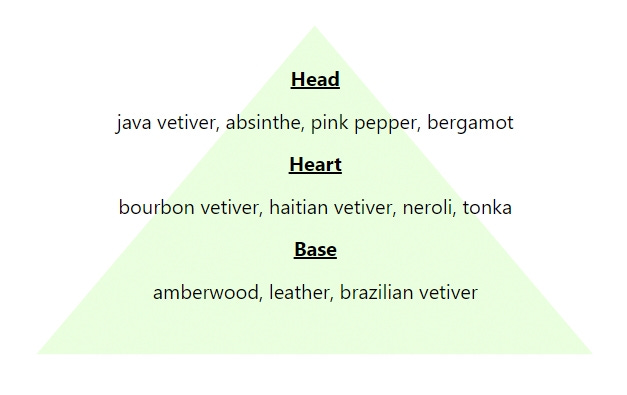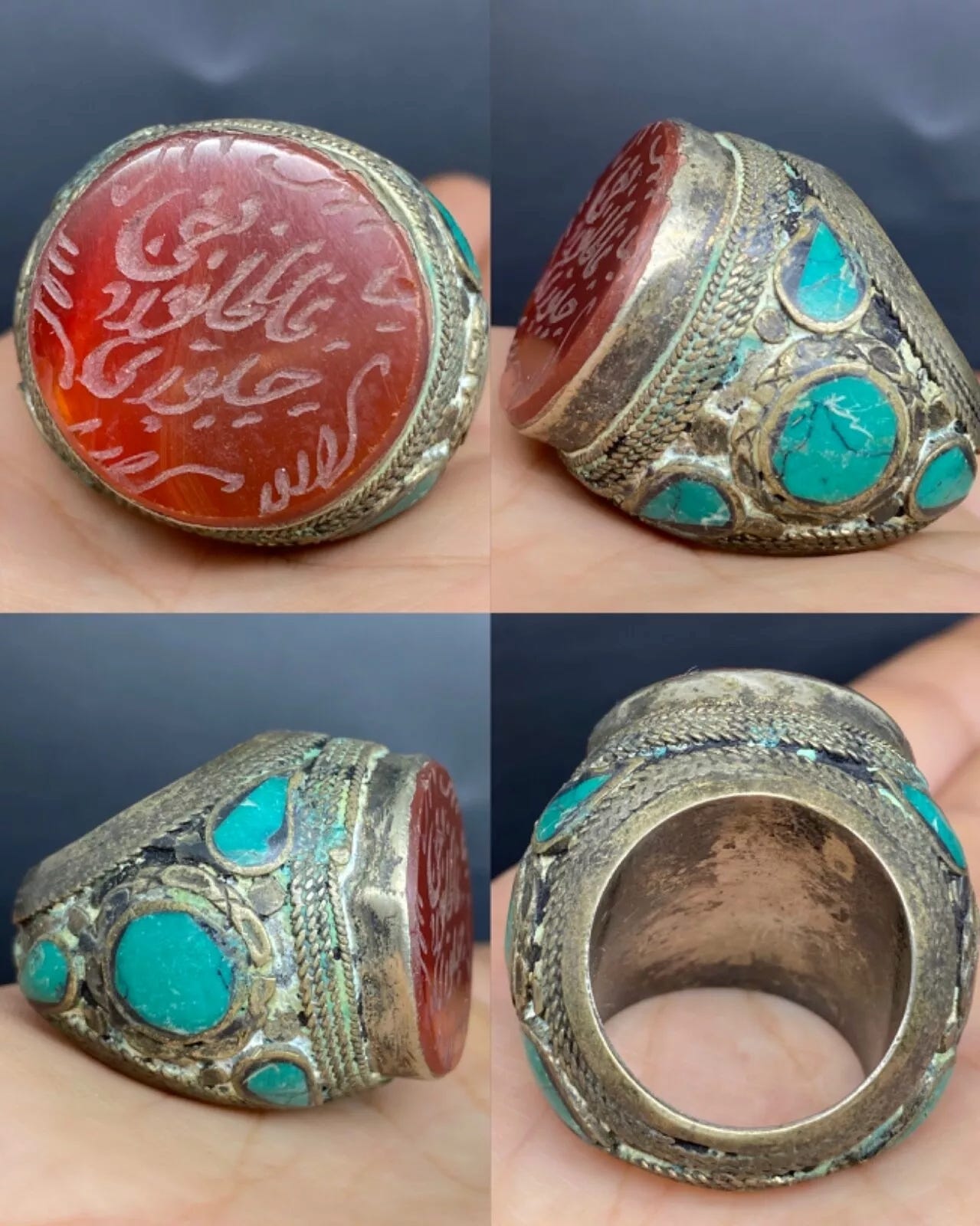Nishane's Sultan Vetiver
Let’s workshop my little report, to be included in the fragrance section of my webpage, about the staple vetiver-centric fragrance in my collection: Nishane's Sultan Vetiver
Sultan Vetiver
Vetiver scent bubbles are tightly coupled with traditional masculinity. One thinks of Sean Connery as James Bond, a character that—much like vetiver itself—fuses the untamed toughness of a backyard brawler with the lemon-peel sophistication of a cocktail connoisseur: earthy ruggedness meets clean-shaven class. Vetiver is a note I had to get used to, at least in its more unadulterated forms. Tom Ford’s Grey Vetiver was the first place I found it highlighted in my fragrance journey. The vetiver dosage there did invoke some nostalgic feelings I could not put my finger on. Had it been the signature scent of some forgotten uncle? Might its characteristic pencil-shaving aspect have stimulated neural stores of grade-school days sharpening my trusty Ticonderoga, which won me—at least as I tell it now—so many pencil-breaking battles? (That seemed more likely.) But despite the intrigue I felt, and despite the Tom Ford being (as I would later learn) Taylor-Swift tame compared to many other vetiver-centric fragrances, I still found it too much. After intensive months of olfactory exploration, however, this once-imposing note became much more my tempo.
Vetiver perfumes come in various styles: genteel and gentlemanly (Frederic Malle’s Vetiver Extraordinaire), dark and ominous and brooding (Lalique’s Encre Noire), citrusy (Diptyque’s Vetyverio Eau De Parfum), light and soapy (Tom Ford’s Grey Vetiver), dry and woody and minerally (Terre D'Hermes’s Vetiver), leathery and spicy (Hermes's Bel Ami Vetiver), and so on. Enter Sultan Vetiver, an oriental offering from Nishane (a niche house based out of Turkey). Sultan Vetiver might not claim the crown as the greatest vetiver fragrance. That place is, like Muhammad Ali in boxing lore, often granted to Guerlain’s 1959 masterpiece: Vetiver, which sets the grassy-citrus standard of vetiver perfumery. As far as I am aware, however, Sultan is the most unapologetically vetiver-forward you can get in modern perfumery. Many trusted frag heads agree. The trustworthy and passionate aficionado Ramsey is one of them.
Sultan drives home a jab-cross-hook-uppercut combo of vetiver. I do mean this fairly literally. Sultan employs four varieties of vetiver (and, as far as I know, is the only perfume that has all of them in one): Brazilian, Javanese, Haitian, and Bourbon. Each type carries a distinct profile, adding a complexity that makes it stand out from other vetiver-forward compositions.
Brazilian vetiver—clean, light, herbaceous, zesty, citrusy—has the clean (and somewhat sweet) profile popular in designer fragrances for its aromatic uplifting feel.
Javanese Vetiver—cedary, balsamic, vanillic, even camphoraceous—offers a peppery warmth and dry-wood sensuality.
Haitian vetiver—earthy, smoky (with undertones of incense, leather, and muddled citrus)—adds a tobacco-reminiscent layer of woody intrigue (and sometimes even a charred element).
Bourbon vetiver—smoky, woody, boozy, peppery (prized for its complexity and elegance)—carries a distant sweetness (as if of fruit deep into fermentation) and yet lends a polished quality that contributes in Sultan Vetiver to the image of this being a sultan’s signature scent.
Sultan opens with a bright green, a commanding—we might say, sultanic—dose of freshly cut grass. That perhaps is to be expected: vetiver is, after all, a perennial grass (one highly valued for its erosion-control and soil stabilization properties in addition to its essential oils). Some vetiver aficionados might find the extreme grassiness too loud. They might worry that it masks the dry-woods nuances of vetiver. This has led to some criticism, particularly regarding regional authenticity. The objection runs something like this.
Nishane takes India as its influence for Sultan Vetiver, specifically mentioning Mumbai on the bottle. Vetiver is ubiquitous in the region. Aside from essential oils and rituals, many rural dwellings in India and the surrounding region enjoy a steady flow of vetiver-tinged air through their “desert coolers”: cooling systems where vetiver-root filter pads, installed in the intakes of air vents, are kept moist with water so that, as outside air passes through, the water they hold strips away heat as it evaporates. The walled-city postcard included with Sultan Vetiver evokes these coolers for those familiar with the area. Herein lies the problem. The aroma these pads fill enclosed spaces with is skewed hard in the dry-woods direction, not the bright green. Nishane’s inclusion of such a grassy vetiver feel, so the criticism goes, suggests insensitivity to the real experience of the region said to have motivated Sultan.
I am not concerned about the authenticity point. And while I acknowledge the initial grassiness can be jarring, I have grown to appreciate it. Perhaps it seemed so loud only because I was burying my nose in my arm. With a more organic and less-analytical approach to the scent, which means not slamming my nose right away into skin like a truffle hunter, I find the bright verdancy balanced by camphoraceous woods. Besides, a more cedary and rootlike feel definitely comes out after the first hour anyway.
Sultan Vetiver, like many vetiver-centric fragrances, opens with notes of citrus, bergamot, and neroli. Although dialed down (which lets the vetiver stand out in its rawness), these top notes introduce a subtle sweetness and aromatic uplift. A wildflower honey note—absent from the profile pyramid—restrains the vetiver from getting too screechy and reinforces the typical image I get: dragonflies hovering freshly mown grass under noon sun. The hint of tea, as well as the bitter and minty licorice stroke of anise-absinthe (reminiscent of the mothball scent I so adore), only enhances that springtime impression. The sugariness, a subtle facet reinforced by tonka bean and coumarin acetate, interplays with the smokiness of the vetiver. The result is a balanced yet dynamic composition that feels both sophisticated and niche.
Past the two-hour mark, the fresh greenery yields a good deal to the smokier and woodier sides of vetiver, sides present all along but (as I experience it at least) really start to sing with time. A suede-like leather emerges along with a root-like aroma reminiscent of pepper and carrots dirty with earth, all while the balsamic honey continues to linger and a subtle skank begins to asset itself. Here was have, in effect, a perfume of contrasts. And as the scent goes on all the facets of vetiver seems to poke their heads: herbaceous, earthy, dirty, rooty, dank, smoky, clean, dry, sweet, fresh, soapy, nutty, bitter, boozy, sweet, creamy, spicy, leathery, woody.
I have learned to expect such complexity from Nishane, a go-to house for consistent originality and performance and perhaps at times even rivaling Amouage in its ability to blend Middle-Eastern tradition with cosmopolitan innovation. That is definitely clear in Sultan Vetiver, a fragrance that pays homage to Turkish history and vintage western vetiver fragrances while being contemporary and complex at the same time. One cannot deny the artistry of the perfumer, Jorge Lee. I own several perfumes that bear his mark: Suede et Safran (a masterclass in the use of saffron and likely my favorite among all the Tuscan-Leather style perfumes) and Fan Your Flames (a lovely coconut-rum-tobacco).
Vetiver, for now at least, is not my top-ranked note. I prefer tobacco and leather more, although I do enjoy many fragrances where vetiver plays a supporting or at least just co-starring role: Gucci Guilty Absolute and Francesca Bianchi’s Black Knight and Kajal’s Sawlaj (which I consider a worthy successor to the shaker version of Bel Ami). I plan on having only one vetiver-soloist fragrance, in that case. At the same time, two things make me hesitate about the one-vetiver rule. (1) Vetiver, a resilient grass, has a tendency to be invasive not only as a plant, which spreads through clumping roots and can displace various vegetation, but also in the mind (making the frag head want it more and more as time goes on). (2) It would be nice to have a more inviting and more widely appealing vetiver (yet one that does not sacrifice artistry), which makes me lean more toward something like Terre D'Hermes (with its quirk of Sichuan pepper)—although given all the good things I have heard about it from people I trust, and given my love for the spirit of regular Bel Ami (especially as captured in Sawlaj), I would blind buy Bel Ami Vetiver if I could get a good price.
Sultan is statement-making, audacious even. There is no getting around that. I struggled, originally, with whether to go with Sultan or Terre D'Hermes. Terre does check a lot of boxes. (1) It is less bland and generic than the Tom Ford Grey Vetiver and yet—elegant and versatile—still appealing enough for my family to like it more than Sultan. (2) I saw a great deal on a tester at Jomashop (it is still there so buy it and send me a 10ml decant for putting you on!). But if you know me, I gravitate towards the artsy and intense. The Terre D'Hermes dies out so quickly whereas with Sultan the projection and longevity, consistent with Middle Eastern perfumery and Nishane in particular, are just so damn robust! And it is so fun to pick out the array of complementary accords as they help to bring out the diverse facets of its various vetivers. Sultan Vetiver proves to be a clever and artfully crafted fragrance.
Look at it this way. After getting her teenybopper holes ploughed out by Pazuzu, no doubt—so at least I imagine—it was hard for any man to satisfy Reagan McNeil (a fact you—well, I—cannot but read in her face in Exorcist 2, perhaps the only thing aside from James Earl Jones that redeems the movie). How, then, can I—someone so enamored of niche-level complexity—be expected to go back to more “vanilla” vetivers after several experiences with Sultan? It is akin to developing a taste for gourmet cuisine: once you have experienced the nuances and depth, simpler fare can seem less satisfying.
Sultan Vetiver's character is partly due to its synthetics. These, on top of the already heavy vetiver, could make some people (those, say, of the stereotypical French persuasion) find it too crass, obnoxious. A key synthetic component is Amber Woods, a class of aroma chemicals that blend warm and resinous qualities with dry and woody qualities. The inclusion of amber woods in perfumery is divisive. Some critics argue that Amber Woods can overwhelm a fragrance (amplifying it to tinnitus-extremes of droning) and that it functions—similarly to autotune or even just to reverb in music production, or to music scores in movies that make you feel emotion you would nit otherwise feel—as a cheap trick to patch compositional holes. The amplification effect is definitely present in Sultan: the intensity is ratcheted up and, given (a) that vetiver is already one of the last-to-fade notes in perfumery and (b) that Sultan is an extrait (as opposed to the more projecting but shorter lived eau de parfum), the longevity is unreal: over 20 hours on my skin (where it becomes a skin scent only after 8 to 12 hours). My nose is still rather green, but the synthetics used here does not bother me. They seem skillfully integrated, not overshadowing the vetiver but intensifying it—like gold rings (or perfumes) might accentuate a sultan's presence.
Sultan Vetiver is loud, something that can easily connote—compared at least to some western ideals of perfumery—a lower-class lack of grace that old money can easily sniff out even among the richest at the gala. This is no Dia Man, Amouage’s masterpiece of whispered confidence. No, Sultan is a fragrance that demands attention. There is no denying that. Sultans wear shiny gold rings, do they not? One could easily say the high volume connotes more of the Middle-Eastern style of ruler: a sultan. But I do not want to convey the wrong idea. I am not simply saying that we need to shift to an oriental standard to see how this could be the scent of a respected ruler. The volume here, even when it shouts (at the beginning), is never that of someone out of control. The base note of leather adds—with help from the amber woods—to this effect, the leather emerging earlier than expected and blending seamlessly with the smoky vetiver to create a tactile finish of warmth.
I could see someone saying that, because of its richness and density, Sultan is best for the evening. I have no problem with that. I wear my scents whenever and wherever and do not, for that matter, buy into strict gender categories when it comes to fragrance (something that is perhaps under threat now with the creep of the trans revolution and its celebration of 1950s gender norms: GI Joe means boy; Barbie means girl). That said, I look forward to having this on in the sun outside on a Spring day (say, at a festival or a county fair or, there is no help for it, at a playground being even creepier than Aqualung—only now with a classically-clean scent bubble around me). And just imagine the transportive experience of wearing it outside just after an intense cloudburst clears! Shit, I even look forward to wearing it while shoveling snow on a cold morning as the plough comes by an undoes all my work!
Sultan is a hall-of-fame reference for the use of vetiver in perfumery. It puts pretty much all other fragrances of its kind into choke submission, at least when it comes to its unapologetic—and potentially off-putting—celebration of vetiver. This is the most hardcore vetiver I have yet to meet. Few frag nerds will doubt that this is up there at the top. But even among those who admit as much and even that the ingredients are top-notch, the question is whether the composition works. Some find it clunky. I think, on the contrary, it shows an amazing fusion of Middle-Eastern and French-style perfumery. There might be hints of heavy-handedness in its extremely verdant opening, but that soon fades and the woody and smoky aspects develop (along with some animalic funk that brings out the Marlboro Man / Clint Eastwood aspect of vetiver). There are too many interesting twists and transitions, too many supporting characters that appear, to call this a bad composition in my view. While there are many Easter eggs in here (honey, tea, absinthe), from a more panoptic point of view, I will still say that Sultan Vetiver is made for those who want their vetiver unadulterated, unadorned.
Treble: Peruvian peppertree, pink pepper, bergamot, anise/absinth, Javanese vetiver oil
Mid: tonka bean, neroli, bourbon vetiver, Haitian vetiver
Base: leather, amberwood, Brazilian vetiver








The write-up on "Sultan Vetiver" serves as an in-depth analysis of a niche fragrance from Nishane, a Turkish perfume house. The author explores how the scent, characterized by its dominant vetiver note, aligns with traditional notions of masculinity, reminiscent of iconic figures like James Bond. The fragrance is complex, employing four distinct types of vetiver—Brazilian, Javanese, Haitian, and Bourbon—each contributing a unique profile that ranges from herbaceous and citrusy to smoky and woody. The discussion underscores how "Sultan Vetiver" stands out among other vetiver-based fragrances, particularly for its unapologetically strong and unadulterated use of the note.
The text critiques the scent's initial grassiness, which some may find overpowering or at odds with the regional authenticity it seeks to evoke, especially considering its inspiration from Indian vetiver traditions. However, the author suggests that this intensity balances out over time, revealing deeper, woodier nuances. The perfume's composition is praised for its complexity, which includes not just vetiver but also accents of tea, honey, and absinthe, contributing to a dynamic and sophisticated olfactory experience.
The author also touches on the broader context of fragrance culture, noting the divisive role of synthetics like Amber Woods, which enhance the scent's longevity and projection but may be perceived as overwhelming by some. Despite these potential drawbacks, "Sultan Vetiver" is lauded as a "statement-making" fragrance that challenges conventional Western ideals of perfumery, offering a blend of Middle Eastern opulence and French refinement. Ultimately, the piece positions "Sultan Vetiver" as a reference point in vetiver perfumery, appealing particularly to those who appreciate bold, unembellished scents.
Sultan Vetiver, Nishane, vetiver fragrance, traditional masculinity, Middle Eastern perfumery, complex scent composition, niche fragrance, Amber Woods, fragrance culture, bold perfumes